Green Ercol sideboard
Vintage Ercol 'Old Colonial' sideboard, painted in Autentico 'Fern'. Sanded and varnished elm top.
This piece of restyled furniture has been hand-painted and hand-finished, and being vintage it has been around for a long time with many years under its belt.
I'm sure that you will agree that any minor imperfections that may be present only contribute to its character, charm and history.
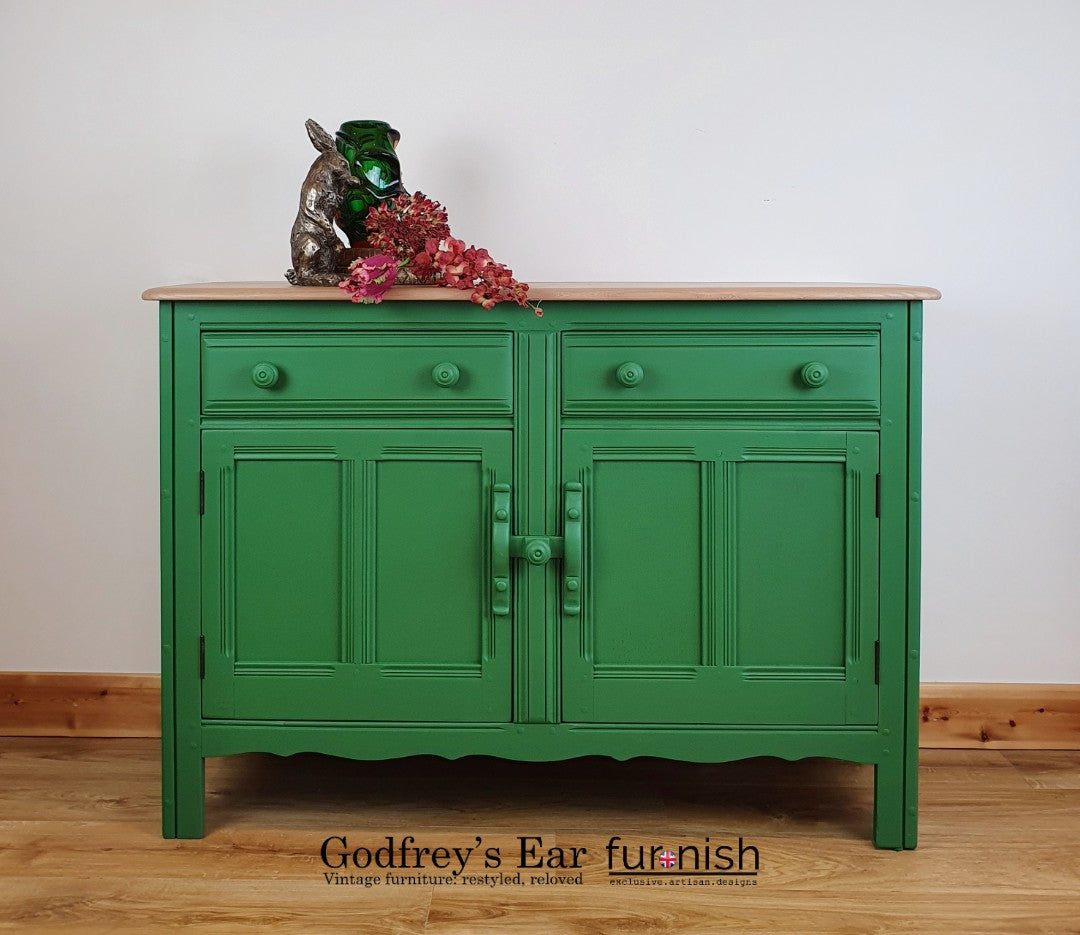
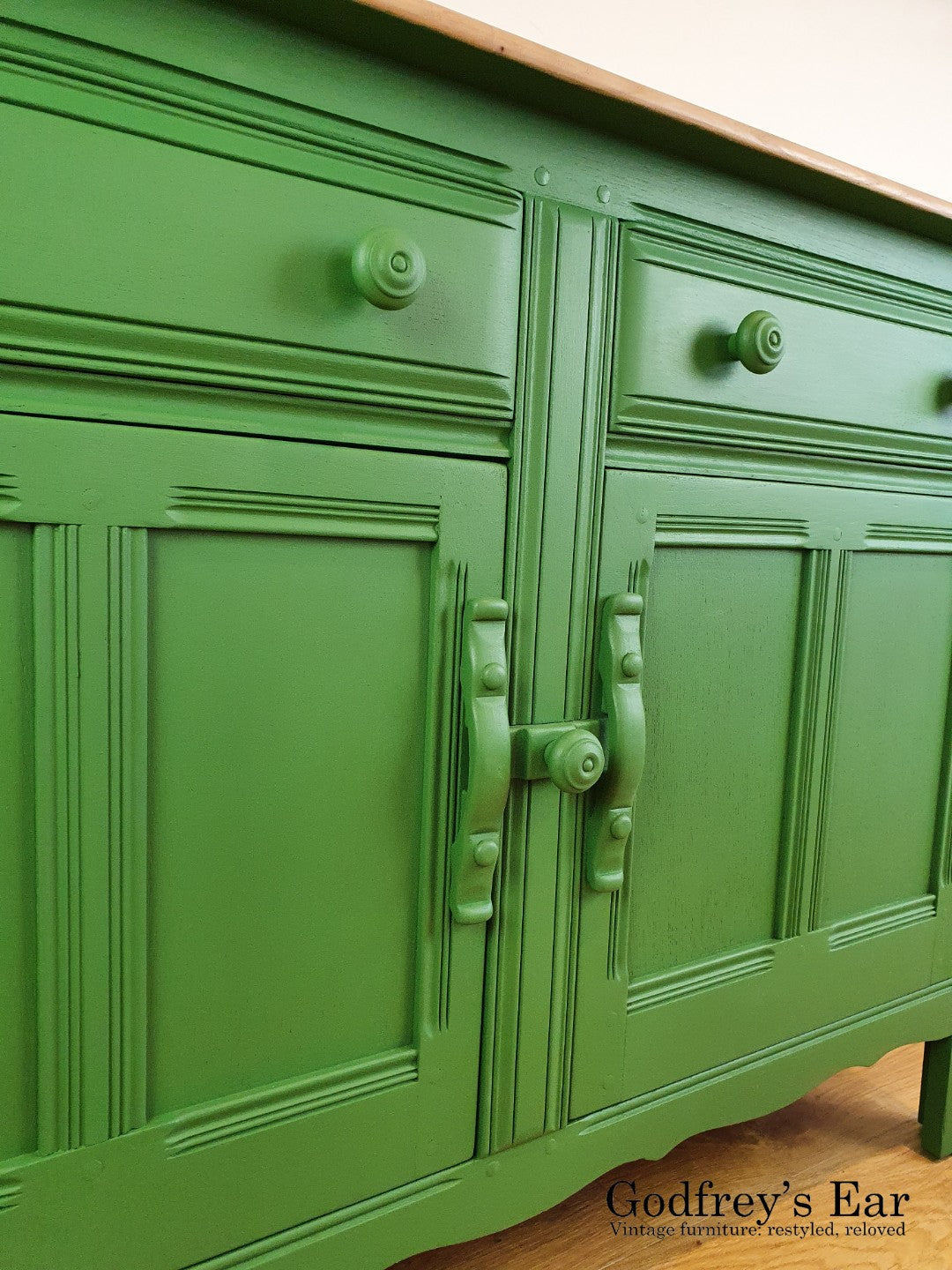
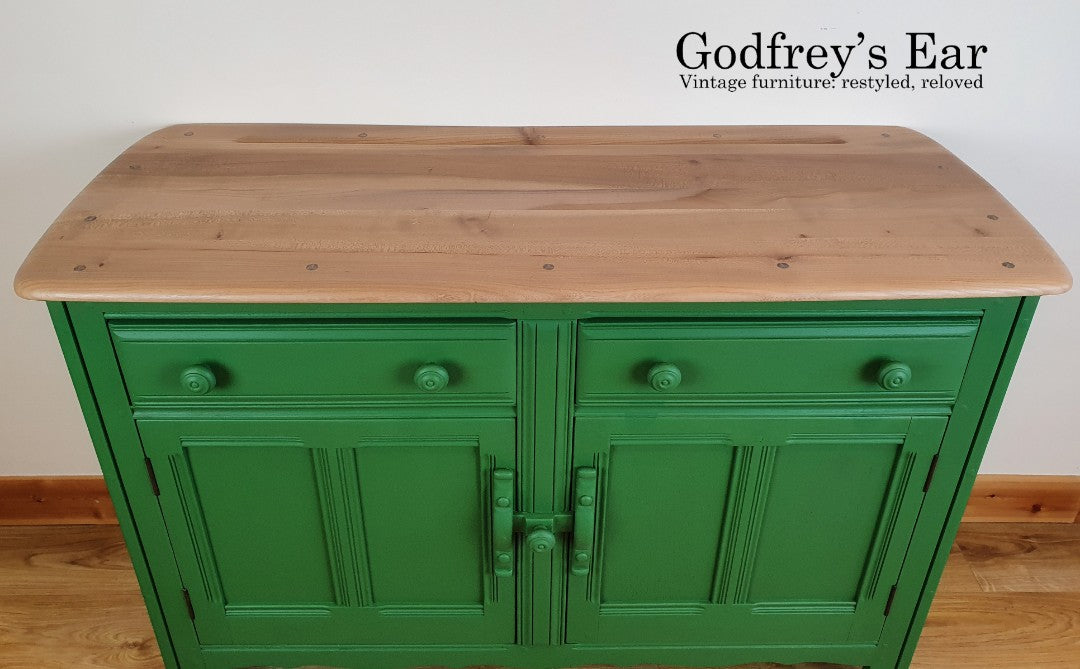
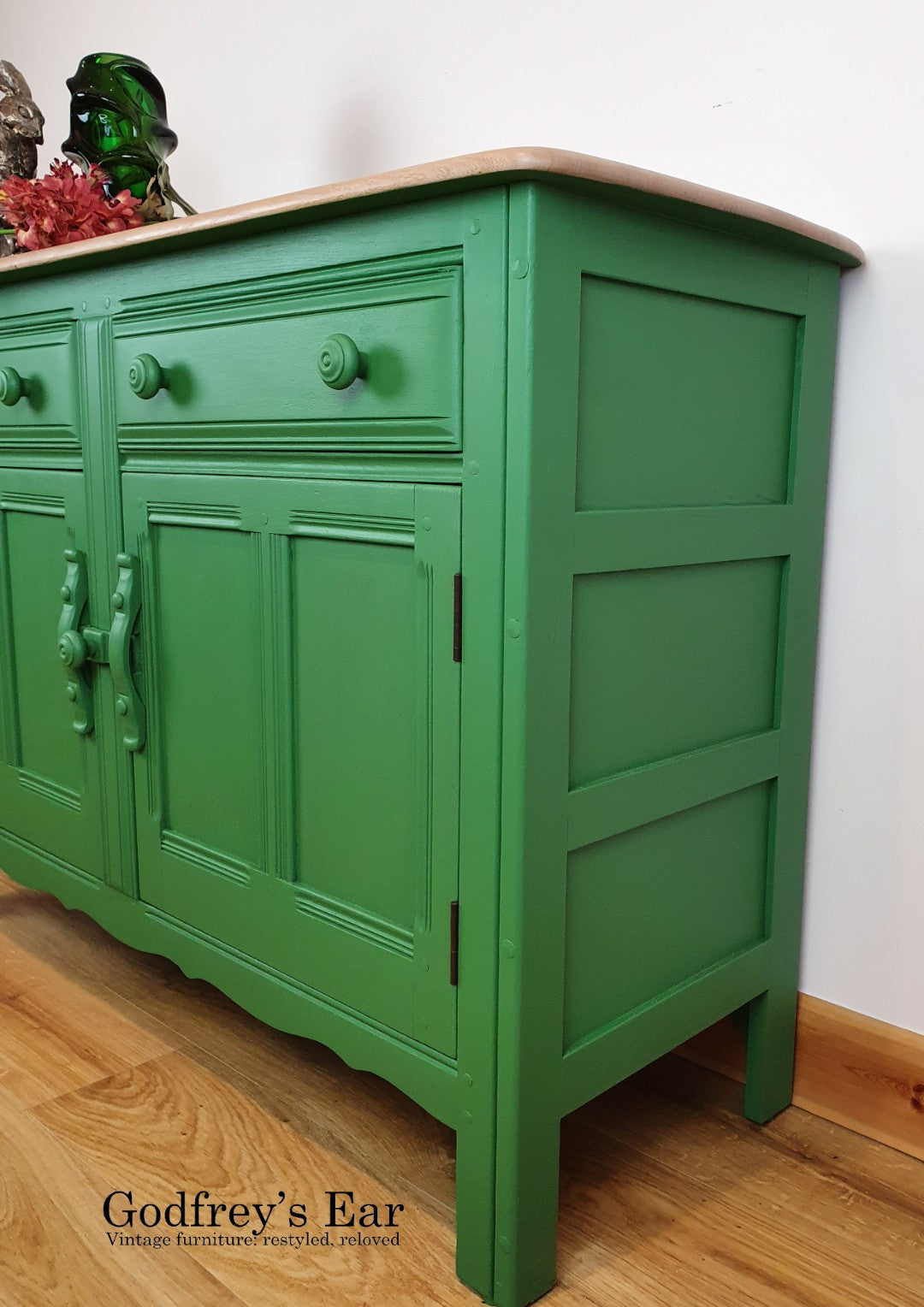
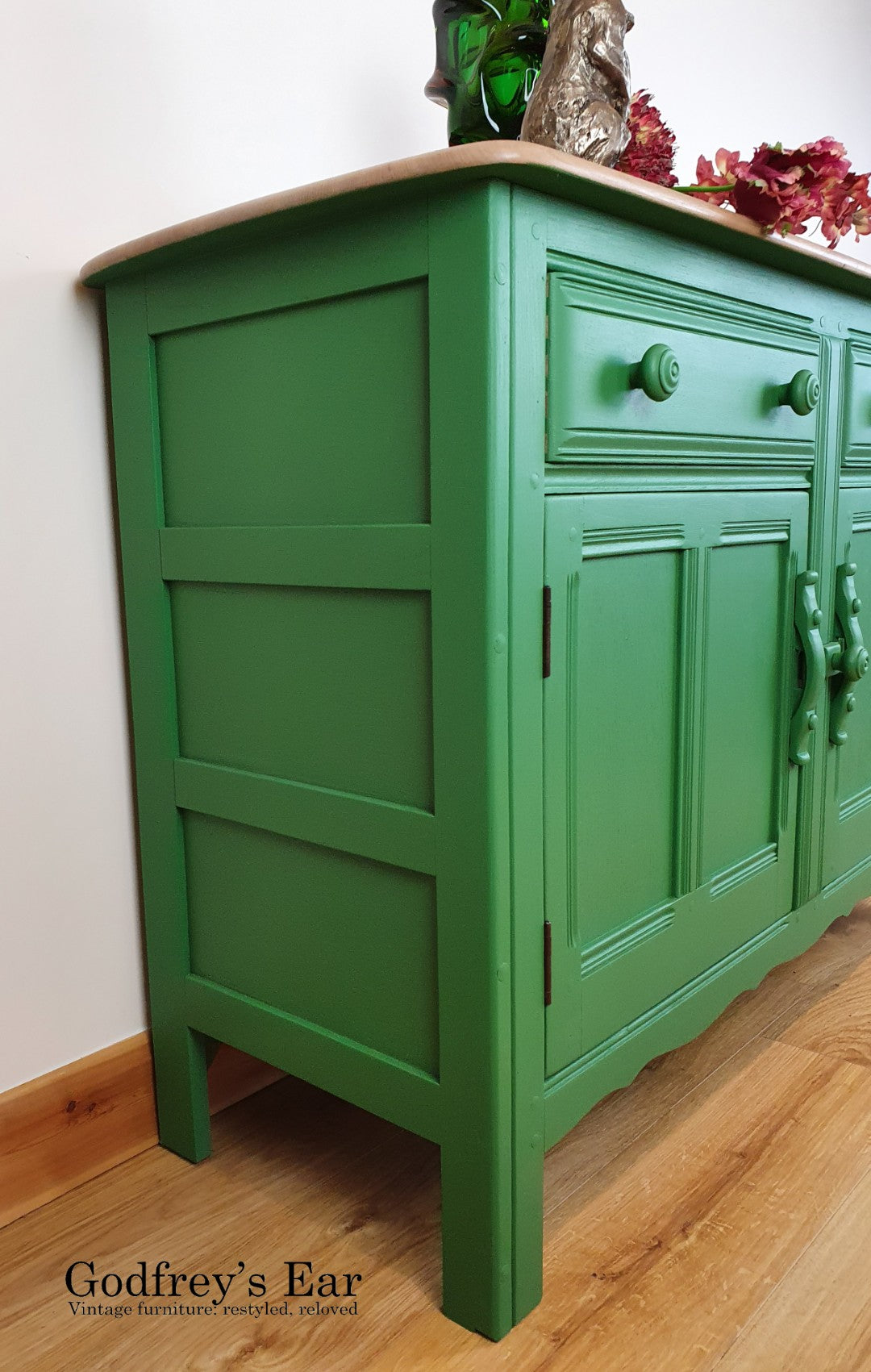
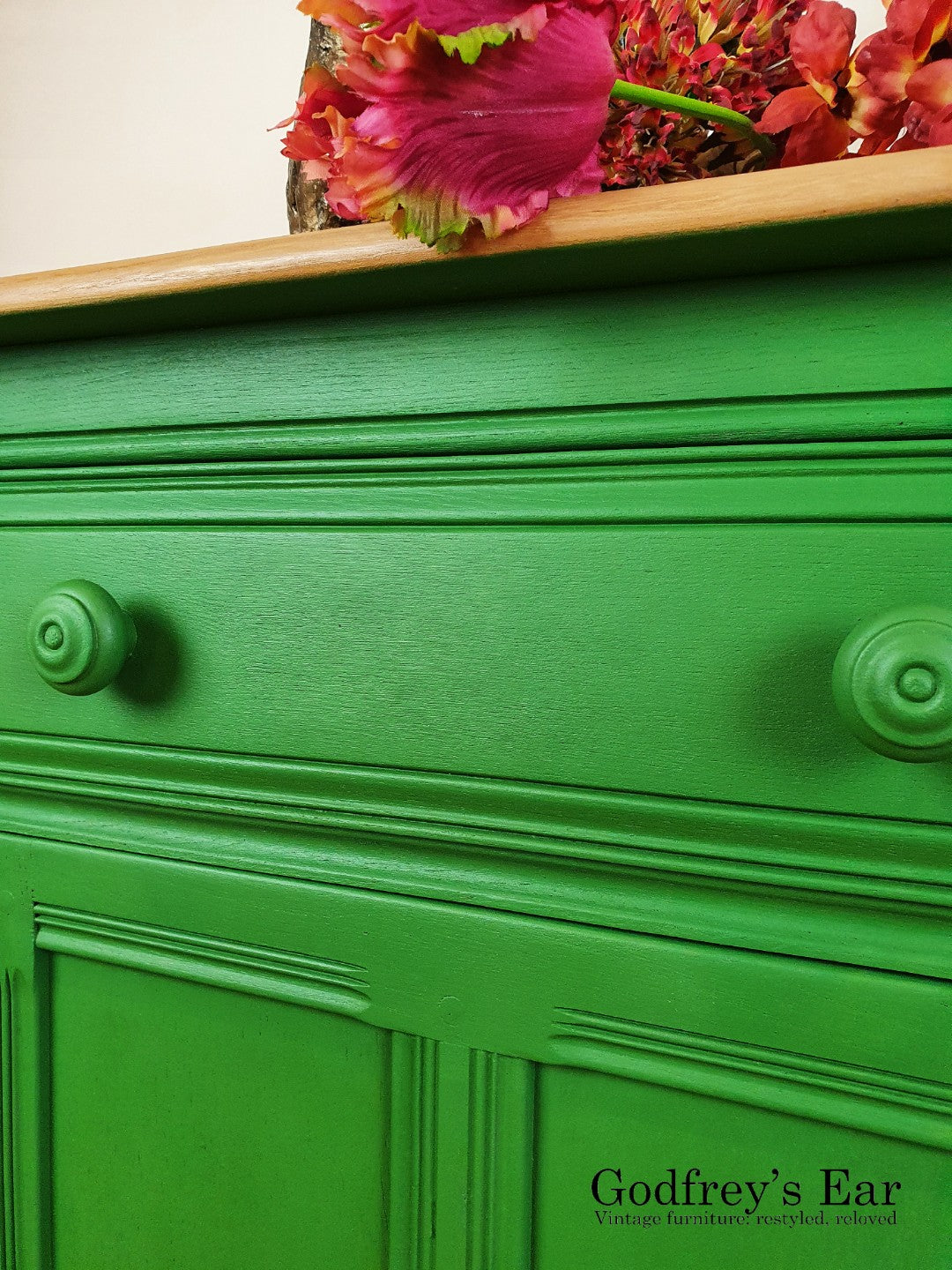
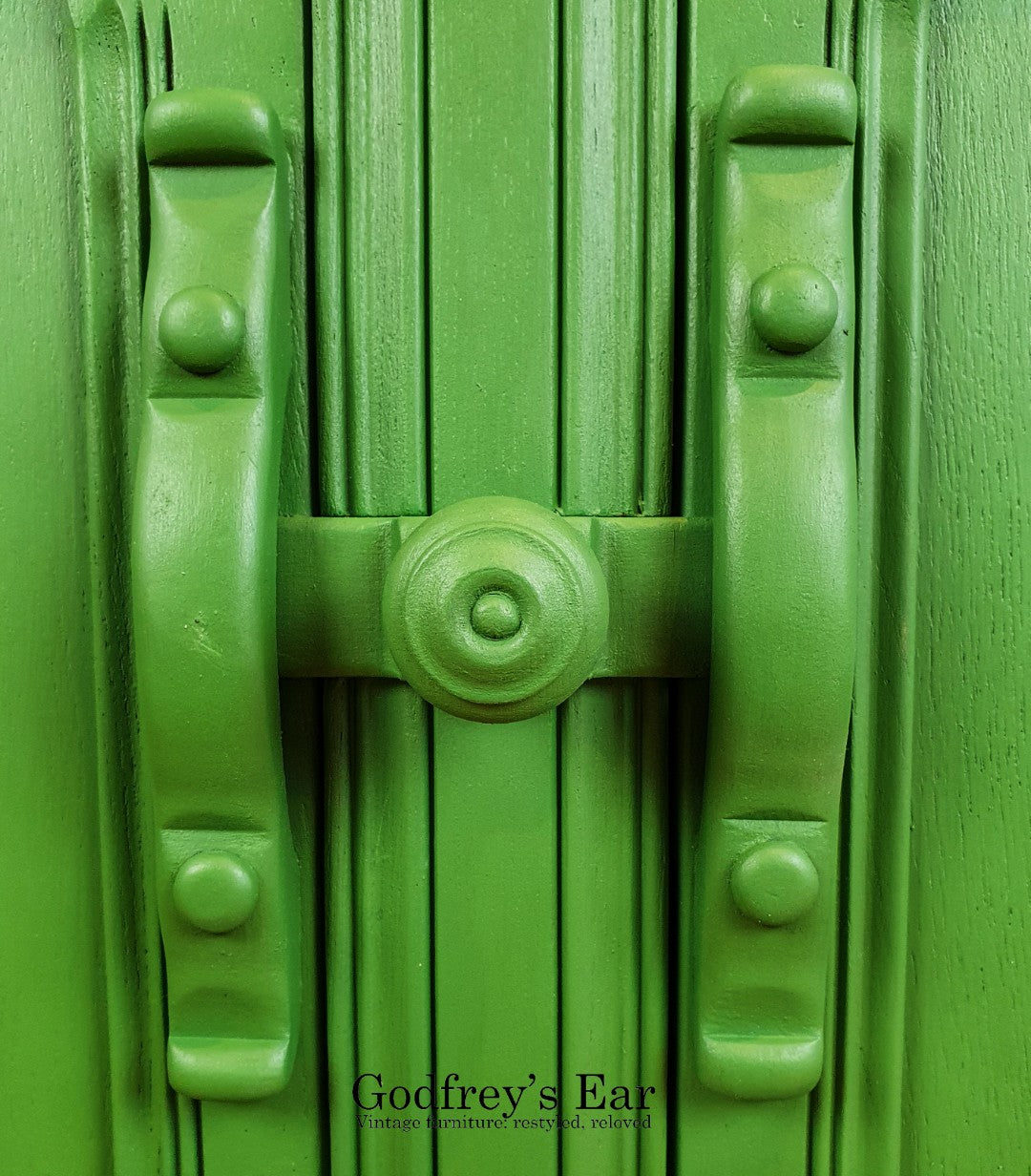
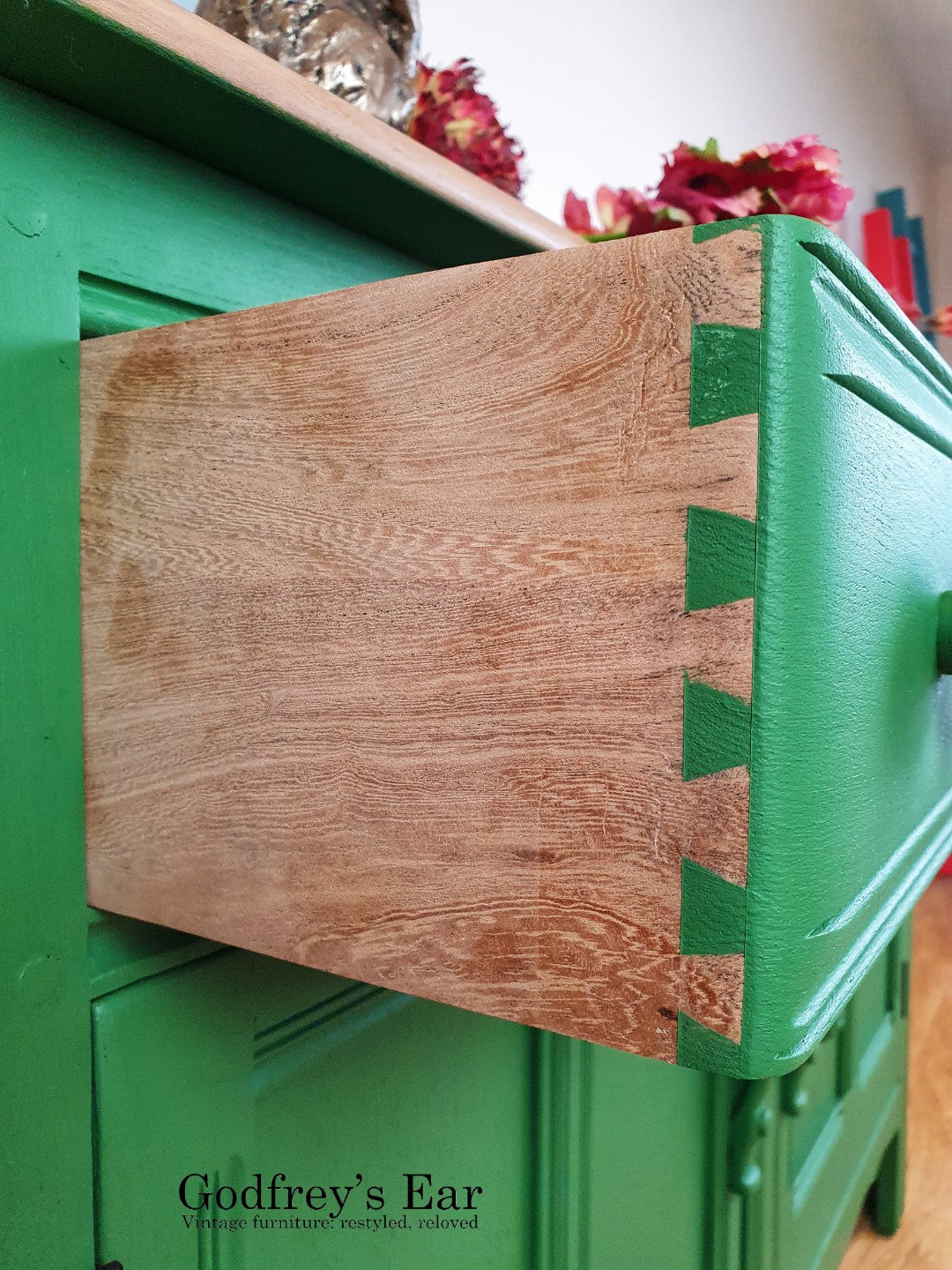
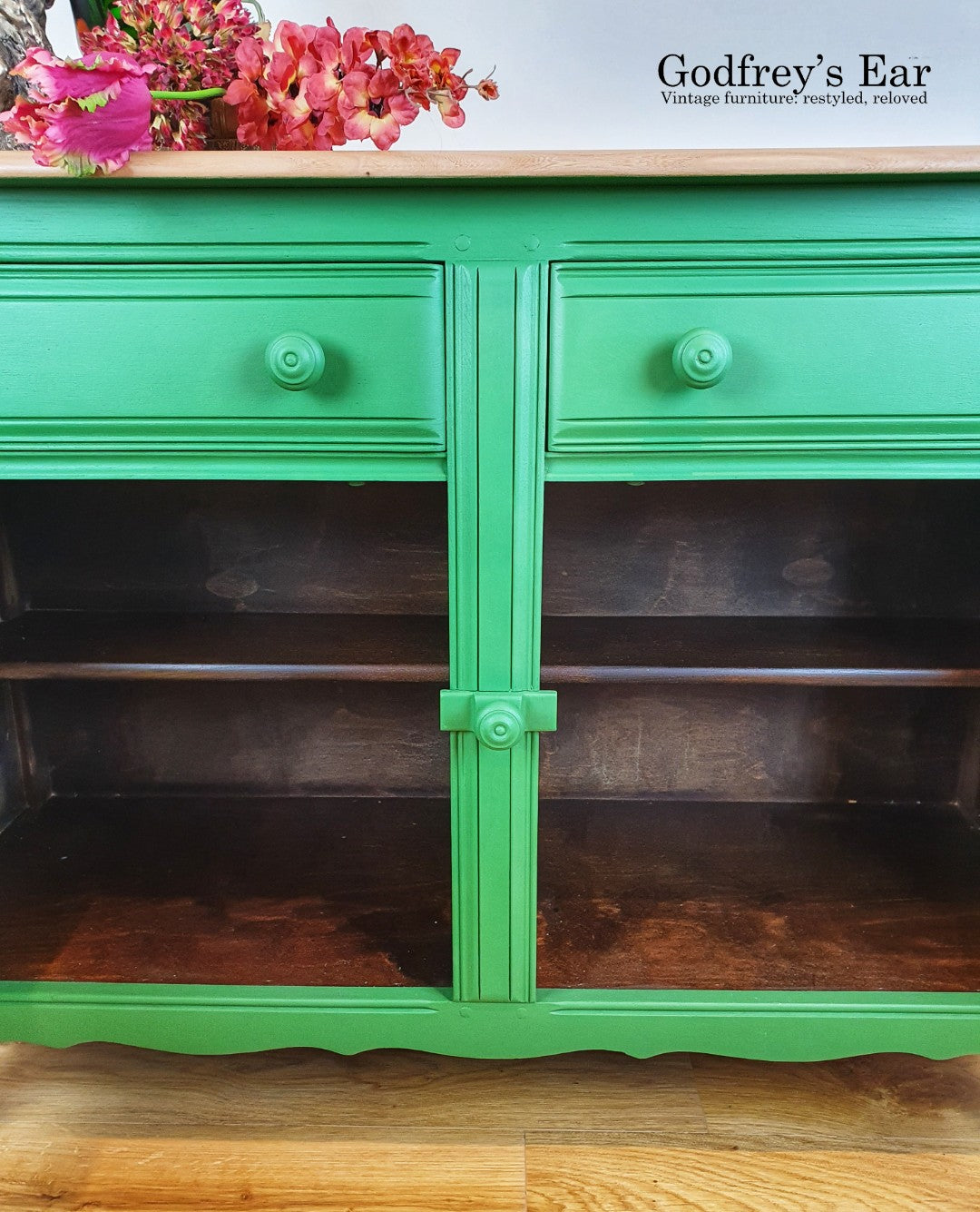
A beautiful sideboard manufactured by Ercol, a British company based in Buckinghamshire, that to this day is producing high quality and stylish furniture.
Made from solid beech and elm, this example is model #331 that was part of the Old Colonial range. It carries the original Ercol blue label dating its manufacture to between the late 1950s and mid-1970s.
I have given this piece a new lease of life by sanding the elm top to reveal an interesting and beautiful grain. I have then applied three coats of clear satin varnish to both enhance the grain and protect the wood. I have sanded back between each coat to leave a silky-smooth finish. The base has been fully prepared by sanding and cleaning before being painted in the colour Fern from the Autentico Versante Matt range.
The sideboard comprises two cupboards and two drawers, one of which is fitted with a sliding lift-out cutlery tray. The two cupboards are fitted with a long shelf for easy convenience and there is ample storage too.
The original finish on the inside of the drawers and cupboard have been treated with an air-drying oil so it is all lovely, fresh and clean.
This really is a statement piece that can take pride of place in a living room, dining room, kitchen or hallway.
- Width 124cm, depth 48cm, height 84cm
The founding of Ercol
Ercol was founded in 1920 by Lucian Ercolani, an Italian immigrant who had moved to Britain with his family in the late 19th century. Having trained as a furniture designer and manufacturer, Ercolani established his company in High Wycombe, Buckinghamshire — a town renowned for its furniture-making industry. Initially, the company specialised in traditional furniture, producing well-crafted pieces using established cabinet-making techniques. However, Ercolani had a deep interest in both innovation and efficiency, which would come to define the brand’s future.
Utility furniture
The turning point for Ercol came during the Second World War when the company was commissioned by the British government to mass-produce furniture as part of the Utility Furniture Scheme. This scheme sought to create functional, well-designed furniture using minimal resources. Ercolani’s expertise in steam-bending wood and designing pieces with a focus on simplicity and strength proved invaluable. These techniques would later form the foundation of Ercol’s most iconic designs.
Post-war growth
In the post-war years, Britain saw a shift in consumer preferences towards modern, lightweight, and affordable furniture. In response to this, Ercol launched its famous Windsor Collection in 1946, which featured sleek, sculptural wooden chairs, tables, and sideboards. The use of solid elm and beech, combined with elegant, curved forms, defined the brand’s aesthetic. The Windsor Chair, with its distinctive spindle back, became an emblem of mid-century modern design. Ercolani’s focus on both craftsmanship and mass production meant that Ercol furniture was not only beautifully made but also widely accessible—helping it gain a reputation as a leading name in British mid-century design.
Mid-century and beyond
By the 1950s and 1960s, Ercol furniture had become synonymous with stylish, contemporary living. The company’s pieces were featured in design exhibitions and homes across Britain, cementing their status as timeless icons. Though mid-century modern design eventually gave way to other trends, Ercol’s classic designs remained in production and saw a resurgence in popularity in the late 20th and early 21st centuries. Today, Ercol continues to produce furniture that blends traditional craftsmanship with contemporary sensibilities, proving that great design truly stands the test of time.
Deciding to invest in a piece of vintage furniture is a sustainable choice in helping to save the environment and our planet. It gives you the freedom and the opportunity to create a truly personal, unique and stylish interior design statement for your home, your stamp, and your mark. It’s your chance to distinguish yourself from the crowds who are so easily led by fast-made, mass-produced and indistinguishable furniture, which, more often than not has been transported from the other side of the world.
Vintage furniture will make your home feel very special; it has character and soul and will be unique to you. My customers often say “That’s different”, to which I always reply “It’s good to be different!” Vintage furniture really can tell a story that no modern piece ever can: it gives a nod to the past and a smile to the future.
Owning a piece of vintage furniture can give you a sense of pride and nostalgia, a feeling you simply cannot experience from new furniture. My ethos is to respect the character of the piece while always delivering a structurally sound and fully functioning item of furniture ready for its new chapter in life.
A great deal of love, care and attention goes into every refurbishment I undertake so that you can enjoy your furniture for many years to come.
Building on a solid foundation
Before starting, every piece is thoroughly checked. Any faults, such as loose joints, surface damage, etc are addressed. You can be sure that I haven't just covered up problems with a 'lick of paint'.
Surfaces are fully prepared prior to painting to make sure that the finish will be durable and lasting.
The right products for best results
I only use high quality furniture paints and other specialist products that I know and trust. You'll find many of these products available in my 'paint shop'.
Out of sight, but not out of mind
It's not only the first impression that matters: details do too.
- All edges, where 'painted' meets 'not-painted', are taped to ensure clean lines.
- Backs of pieces are generally painted - not every piece will be placed against a wall.
- Underneaths of pieces are painted if there is any chance of seeing them when a piece is in place.
- The insides of cupboards, drawers, etc are cleaned and refreshed
Not just for show
Almost all furniture has to be practical as well as beautiful.
I apply varnish to surfaces that are likely to see heavier wear, so the painted finish will be protected.
Both before and after painting, all moving parts, such as doors or drawers, are checked for smooth operation.
Do you want to know more?
I am happy to answer any questions that you may still have, or to supply more photographs if needed.
Should you be close enough, you are also very welcome to visit my Brailsford studio to inspect any pieces.
Trust in experience
I have over 10 years of professional furniture painting experience, and everything I have learned during that time goes towards making sure that you will be delighted with your new piece of furniture.
But don't just take my word for it, see my testimonials from previous happy customers.